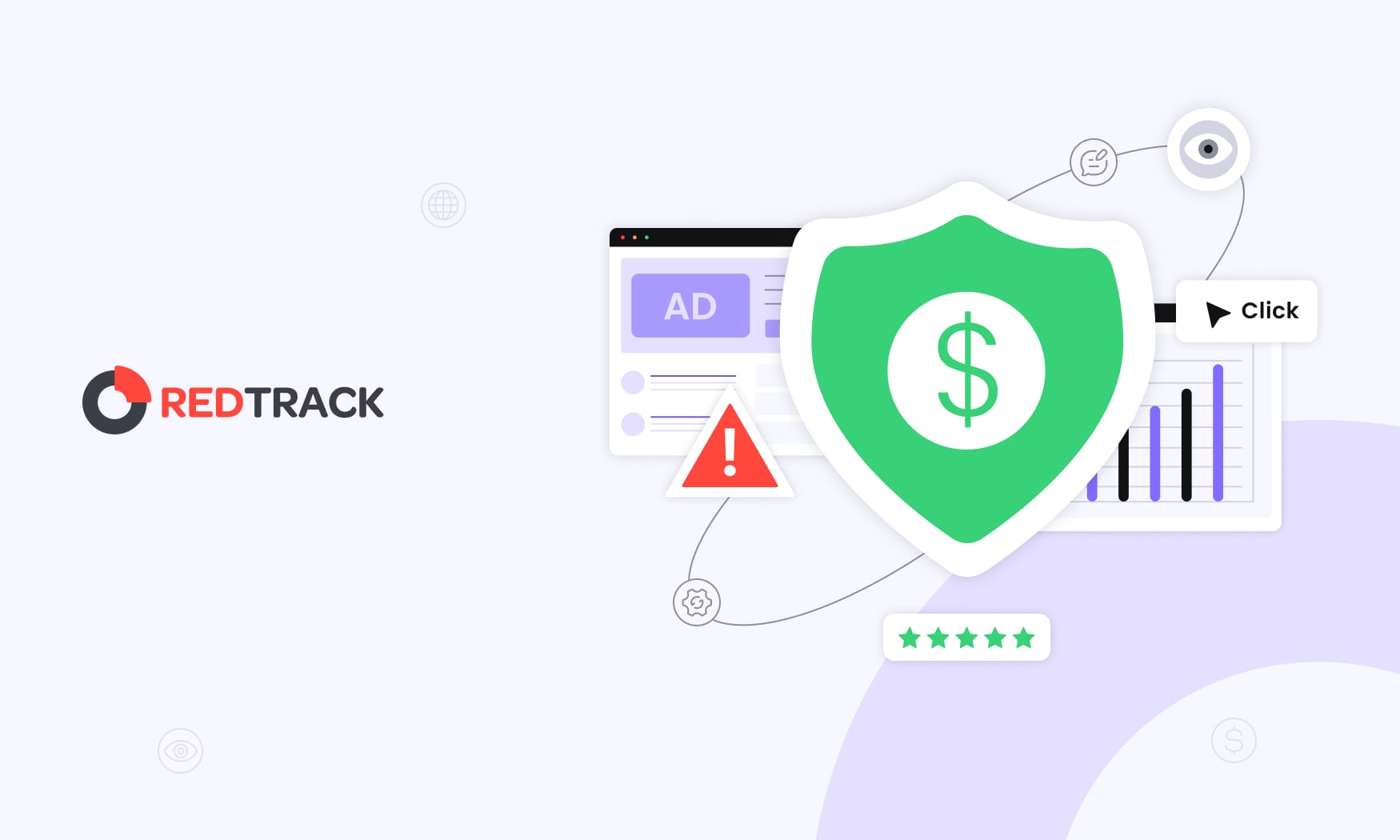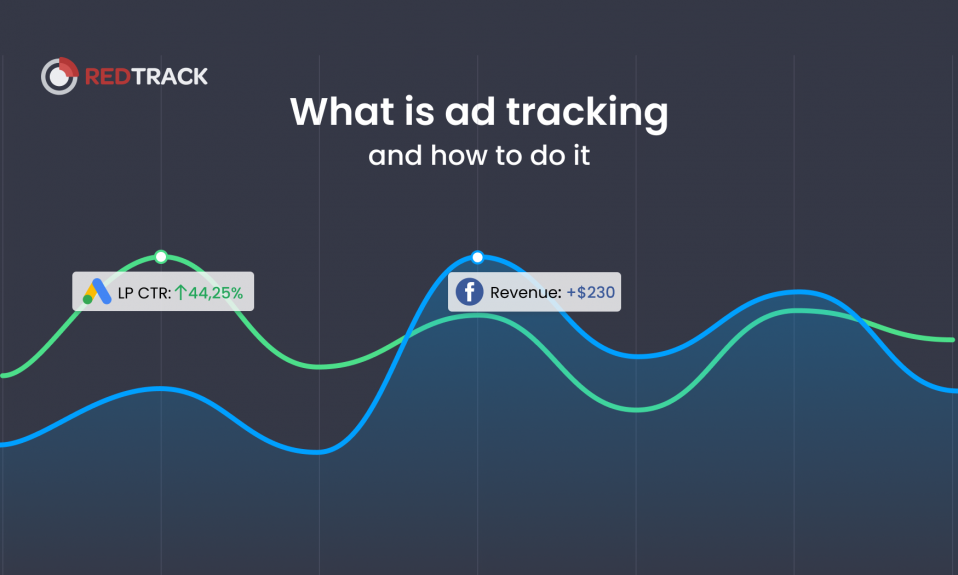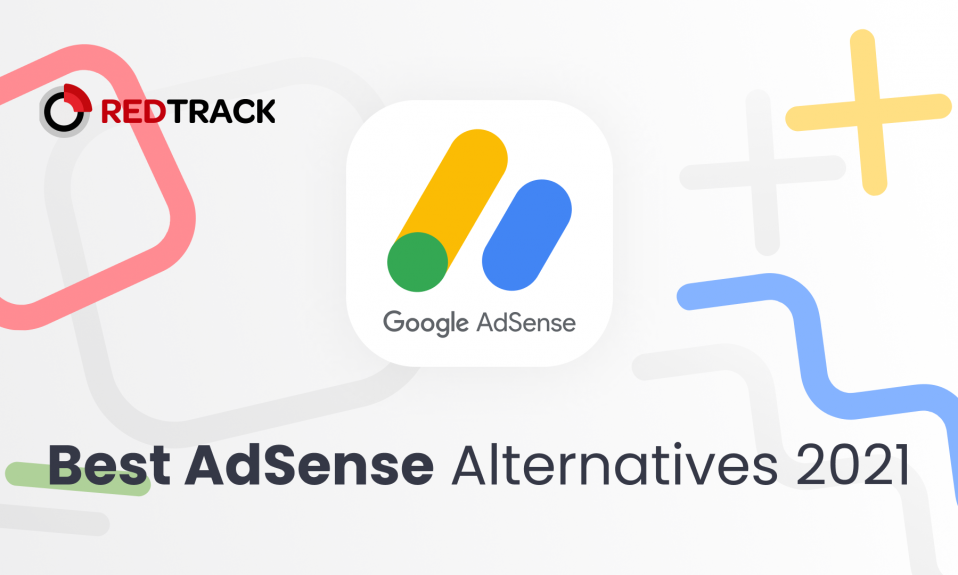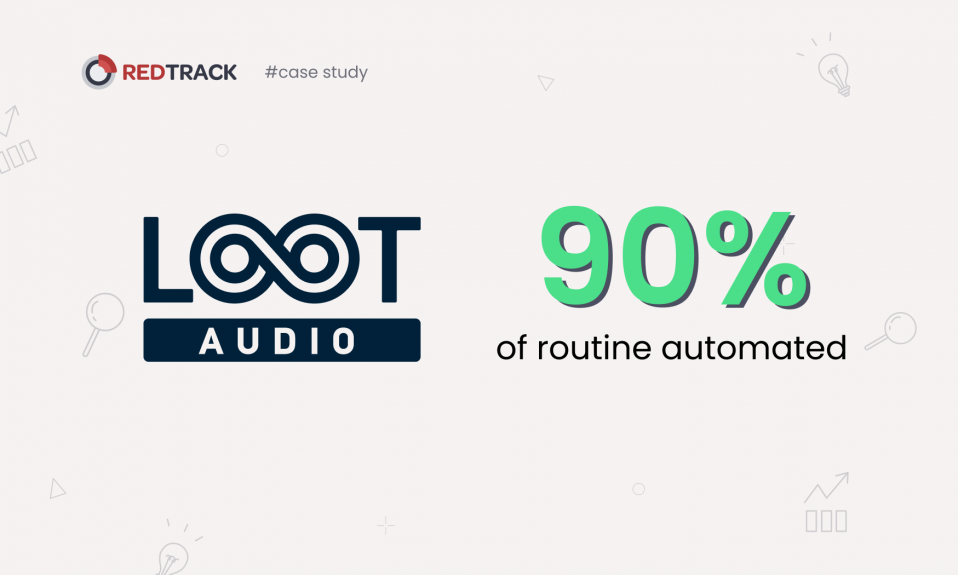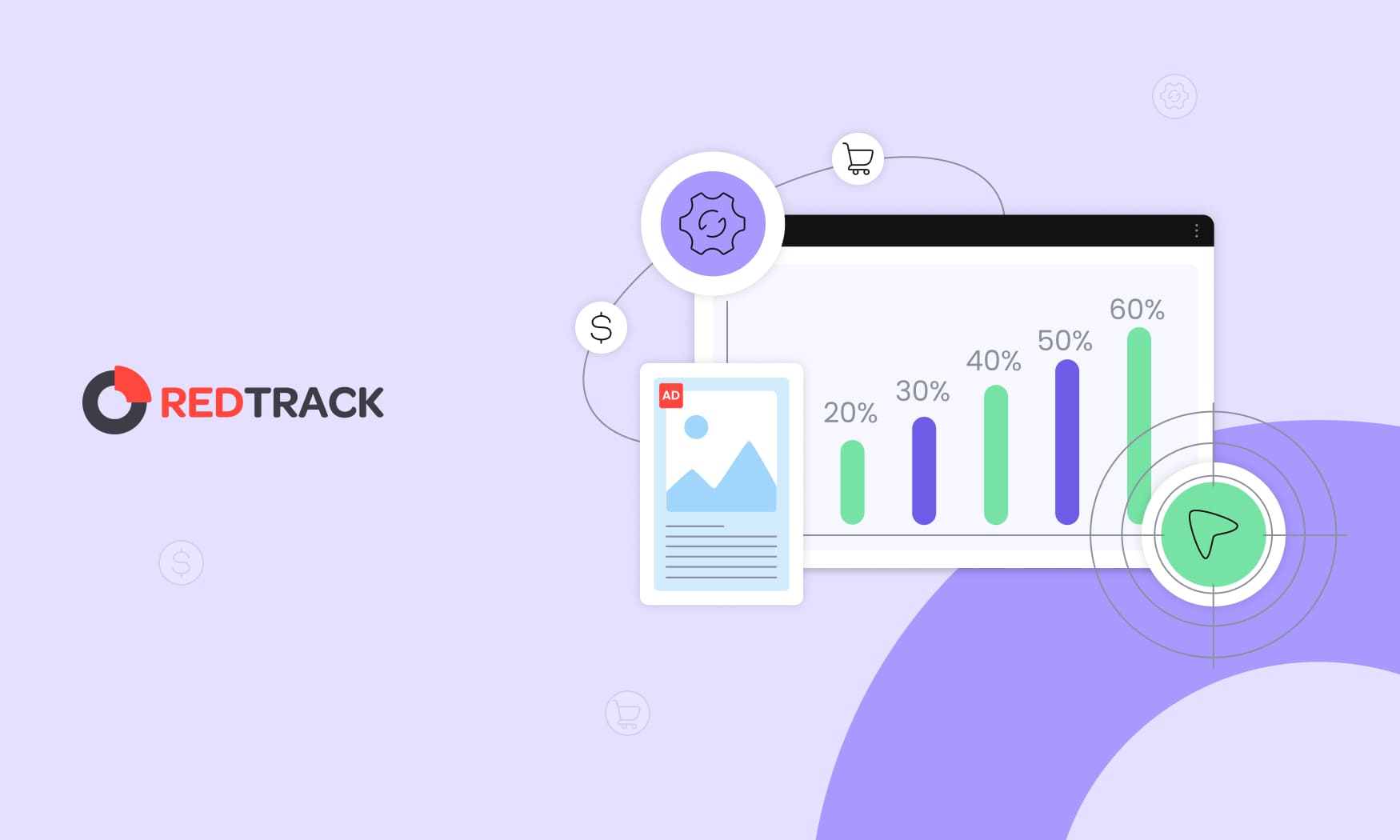
Modern marketing is messy.
Buyers jump across multiple touchpoints, devices, and platforms before they ever convert. Yet too many teams still measure success using outdated, one-dimensional models that tell only part of the story.
That’s where the time decay attribution model comes in.
Unlike last-click or linear attribution, time decay recognizes that timing matters. It gives more credit to the interactions that happen closest to the conversion, offering a realistic view of the customer’s decision-making process. For marketers running complex, multi-channel campaigns, it’s a way to finally connect cause and effect – not just guess at what’s working.
In this guide, we’ll break down how time decay attribution works, where it outperforms other models, how to implement it effectively, and how tools like RedTrack help you turn attribution from theory into a competitive advantage.
How Time Decay Attribution Works in Practice
Knowing the theory is one thing – seeing it in action is where it clicks.
Let’s break down how the time decay attribution model actually works in real-world marketing setups and how it turns a bunch of customer touchpoints into clear, actionable insights you can use to make smarter decisions.
Step-by-step process of tracking customer touchpoints from first interaction to conversion
The time decay attribution model starts with one crucial thing – collecting clean, consistent data from every marketing channel. Each customer interaction is tracked and time-stamped, creating a complete story of their path to conversion.
Here’s how it plays out:
- Customer Identification: Every visitor gets a unique ID that follows their activity across devices and platforms.
- Touchpoint Recording: Each interaction – from a social ad click to an email open or even an offline touch – is logged with an exact timestamp.
- Journey Mapping: The system connects the dots, mapping the full sequence of interactions leading up to the conversion.
- Weight Calculation: The time decay algorithm assigns more credit to touchpoints that happened closer to the conversion.
- Attribution Assignment: Finally, the model distributes credit across all channels and campaigns based on that timing logic.
This structured process helps marketers see exactly how each touchpoint moves the needle – all while keeping data integrity front and center.
Time-stamping mechanism and proximity calculation to conversion event
Accurate time-stamping is the backbone of the time decay attribution model. Modern tracking systems log every customer interaction down to the second, allowing the model to calculate how close each touchpoint was to the final conversion – and weigh it accordingly.
Here’s how it works: imagine a customer converts on Day 30. The model looks backward and evaluates each interaction by its timing. A click or visit on Day 29 gets far more credit than one on Day 1, even if that first touch was the customer’s initial introduction to your brand.
While tools like Google Analytics 4 handle these calculations automatically, knowing how the proximity logic works helps marketers fine-tune their decay settings and choose an attribution model that truly reflects how their audience behaves.
Mathematical explanation of exponential decay weighting
At its core, the time decay attribution model runs on an exponential decay formula – meaning the farther a touchpoint is from the conversion, the less credit it gets. The math behind it looks like this:
Credit(t) = e^(-kt)
Where:
- t = time elapsed since the touchpoint
- k = decay constant that determines how quickly credit diminishes
- e = mathematical constant (approximately 2.718)
Most platforms let you tweak this “decay rate” to match your sales cycle and customer behavior. For example, Google Analytics uses a default 7-day half-life, meaning a touchpoint gets only half the credit of another that happened just a week closer to the conversion.
Exponential decay formula application with customizable half-life periods
The “half-life” in time decay attribution defines how fast credit fades over time. With a 7-day half-life, for example, a touchpoint earns 50% of the credit it would’ve received had it happened right before the conversion, 25% after 14 days, and so on – each step losing influence exponentially.
Different industries fine-tune this setting to match their buying cycles:
- B2B SaaS: longer journeys often call for 14–30 day half-lives.
- E-commerce: quick purchase decisions typically work best with 3–7 day windows.
- Luxury brands: high-consideration purchases might stretch the half-life to 45–60 days.
This flexibility is what makes time decay attribution so useful – it molds itself around your business model and how your customers actually make decisions.
Integration with platforms like Google Analytics 4, Adobe Analytics, and HubSpot
Most modern analytics platforms include built-in support for the Time Decay Attribution model – making it easy to compare and customize within their reporting environments.
- Google Analytics 4 offers time-decay as a standard option, letting marketers benchmark it against other models directly inside their dashboards.
- Adobe Analytics provides deeper control with adjustable decay parameters, custom half-life periods, and even integration with offline touchpoints.
- HubSpot includes time-decay options within its attribution reporting, particularly useful for B2B teams with long nurturing sequences.
However, not every attribution platform supports this model out of the box.
For example, RedTrack currently doesn’t include a native time-decay attribution model. It offers standard options like First Touch, Last Touch, Linear, and U-Shaped, but time-decay must be implemented externally – by exporting RedTrack data and applying decay weighting manually in a BI tool or custom script.
This distinction matters if you’re working with long or complex buyer journeys.
If your attribution needs depend on understanding when conversions happen relative to earlier touchpoints, make sure the platform you’re using supports configurable time-decay logic or allows raw data exports for custom modeling.
Key Benefits of Time Decay Attribution
The time decay attribution model brings several clear advantages compared to basic, single-touch approaches. These benefits really shine in complex marketing setups – where customers interact with your brand multiple times over weeks or even months before finally converting.
Accurate Representation of Customer Behavior
Time decay attribution reflects how people actually make decisions. It’s built around the simple truth that what happens most recently tends to matter most – a principle backed by psychology and known as the recency effect.
Reflects psychological recency bias where recent interactions have stronger influence on purchase decisions
The human brain naturally gives more weight to recent experiences. A customer who gets a powerful email offer today is far more likely to convert than someone who saw a great social post three weeks ago – even if that post was more engaging.
Time decay attribution accounts for this bias by assigning greater credit to touchpoints that happen closer to the conversion.
The result? Attribution data that mirrors real customer behavior, not just theoretical balance.
Captures natural customer journey patterns in B2B sales cycles lasting 6-18 months
In B2B, where sales cycles can stretch 6–18 months, prospects interact with content at every stage – from early educational articles to late-stage demos and pricing discussions.
Time decay attribution ensures those later, bottom-funnel touchpoints and nurture campaigns get the credit they deserve for actually moving deals across the finish line. It helps marketers see which efforts truly drive conversions, not just awareness.
Better alignment with actual decision-making processes compared to equal-weight models
Linear attribution treats every touchpoint as equally important – but that’s just not how people buy. Out of dozens of interactions, only a few really tip the scale.
Time decay attribution zeroes in on those decisive moments, weighting credit toward interactions that happen when the customer is actively considering a purchase. This gives marketers more accurate, actionable insights they can actually use to refine strategy.
Enhanced Conversion Optimization
One of the biggest strengths of time decay attribution is how clearly it shows what actually drives conversions. By revealing which touchpoints help close deals, it lets marketers double down on what works and stop wasting money on what doesn’t.
Identifies high-impact bottom-funnel activities like retargeting campaigns and demo requests
In most models, retargeting ads, product demos, and free trial offers don’t get enough credit – even though they often seal the deal. Time decay model fixes that by giving proper weight to those final interactions that push customers over the line.
With that clarity, marketers can fine-tune their funnel – investing more in proven, conversion-driving tactics while keeping steady support for top-funnel campaigns that build long-term demand.
Enables optimization of closing tactics and last-mile marketing efforts
When you know which late-stage touchpoints truly move the needle, you can start refining every part of the close: from retargeting creative and timing to final nurture sequences and sales handoffs.
Time decay attribution turns guesswork into strategy – giving teams data that shows which tactics directly lead to conversions, not just engagement.
Supports budget allocation toward conversion-driving channels like paid search and email nurture sequences
With solid attribution data, budget decisions stop being gut calls. If paid search or email nurture sequences consistently appear near the conversion point, they deserve more investment.
This approach helps teams maximize ROI by focusing on the channels that actually influence purchase decisions, while still maintaining healthy spend on top- and mid-funnel awareness campaigns that feed future conversions.
Improved ROI Measurement
Better attribution means better ROI tracking – plain and simple. Time decay attribution model gives a more realistic view of how your marketing spend translates into actual revenue, helping you see which efforts truly drive results and make sense in your advertising marketing strategy.
More accurate attribution of revenue to recent marketing investments
Last-click attribution often gives too much credit to the final touchpoint and ignores the rest of the journey. Time decay attribution balances the picture – it still highlights recent interactions but doesn’t dismiss the earlier ones that helped build intent.
That balance gives marketers a truer sense of campaign performance and makes it easier to prove the real impact of their work when discussing future investments.
Better justification for conversion-focused campaign budgets
Conversion-stage campaigns like retargeting and nurture sequences often get overlooked when budgets are tight. Time decay attribution fixes that by clearly showing how much these efforts contribute to final revenue – helping teams defend and secure the budget they actually need.
Enhanced measurement of remarketing campaign effectiveness
Remarketing campaigns usually happen near the end of the customer journey – the exact stage where time decay attribution shines. By giving proper weight to these late-stage touchpoints, marketers can clearly see which remarketing tactics convert best and continuously refine them for maximum ROI.
Limitations and Challenges
While time decay attribution brings plenty of advantages, it’s not really a silver bullet.
No model perfectly captures the full complexity of how people make buying decisions – and time decay comes with its own quirks that marketers need to understand.
Its biggest limitation? It can sometimes oversimplify multi-channel marketing campaigns, especially when buyers engage across long timeframes or through touchpoints that aren’t easily tracked.
Recognizing these constraints helps marketers apply the model wisely – using it as a strong directional tool, not an absolute truth.
But that’s just a few out of following ones…
Undervaluation of Early-Stage Touchpoints
One of the biggest trade-offs with time decay attribution is that it can paint an incomplete picture – especially for marketing efforts that happen early in the customer journey.
While it accurately reflects which touchpoints push conversions across the finish line, it often underplays the quiet groundwork that made those conversions possible in the first place.
The problem: early efforts get buried under late-stage credit
Top-funnel marketing campaigns like brand awareness ads, educational content, and thought leadership rarely get the recognition they deserve. These are the touchpoints that first spark curiosity, build trust, and establish brand preference – yet, because they happen far from the conversion moment, time decay models give them minimal credit.
Over time, this imbalance can lead to skewed budget decisions – with too much emphasis on retargeting and bottom-funnel tactics, and not enough investment in the brand-building activities that drive long-term demand.
The consequence: short-term wins, long-term loss
When marketers rely solely on time decay data, they risk optimizing for conversions today while starving the funnel for tomorrow.
Cutting spend on awareness and lead generation may boost short-term ROI metrics but erodes future pipeline growth and weakens overall customer acquisition momentum.
The solution: balance, not blind faith
Time decay attribution is powerful, but it should never operate in isolation.
The smartest performance media buyers pair it with complementary models (like first-touch or position-based) and look at multi-model comparisons before reallocating budgets.
That balance keeps data honest, ensuring every stage of the journey (from first impression to final click) gets the credit it deserves.
Implementation Complexity
Time decay attribution can unlock valuable insights about which touchpoints truly drive conversions – but it comes with a heavy dose of technical complexity.
Unlike single-touch models that are easy to deploy and interpret, time decay attribution model requires robust infrastructure, precise tracking, and ongoing maintenance to keep data accurate and actionable.
The challenge: stitching together a fragmented ecosystem
To make time decay work, every customer interaction must be recorded and time-stamped – across ads, email campaigns, social media, CRMs, websites, and even offline events.
That means syncing multiple data sources that often speak different “languages.”
This cross-platform integration is where many marketing teams struggle. Without proper pipelines and clean tracking setups, the model loses accuracy long before it starts providing valuable insights. Smaller teams, in particular, may find the technical overhead hard to manage without dedicated analytics support.
The reality: you need serious analytical firepower
Time decay attribution model isn’t something Google Sheets can handle.
It relies on analytics platforms capable of processing huge datasets and running exponential weighting formulas that determine which touchpoints deserve credit. Many out-of-the-box analytics tools don’t have this sophistication.
That’s why most companies either invest in specialized attribution software or bring in data experts to build and maintain the setup.
It’s not cheap, but without it, you’re essentially guessing.
The hidden cost: ongoing upkeep and data hygiene
Single-touch models are simple, but time decay is a living system.
It needs constant monitoring – fine-tuning decay parameters, cleaning data, and validating results. Add to that the chaos of privacy laws, cookie restrictions, and cross-device tracking gaps, and you’ve got a model that can easily lose precision without regular care.
The payoff: precision that justifies the effort
When implemented correctly, time decay attribution becomes a game-changer. It reveals your most effective marketing channels, clarifies how timing shapes conversions, and helps allocate budgets based on what actually drives revenue – not just what’s easiest to measure.
But it’s not for the faint of heart. Time decay attribution rewards technical discipline and strategic patience – qualities that separate good marketers from great ones.
How Does Time Decay vs Other Attribution Models
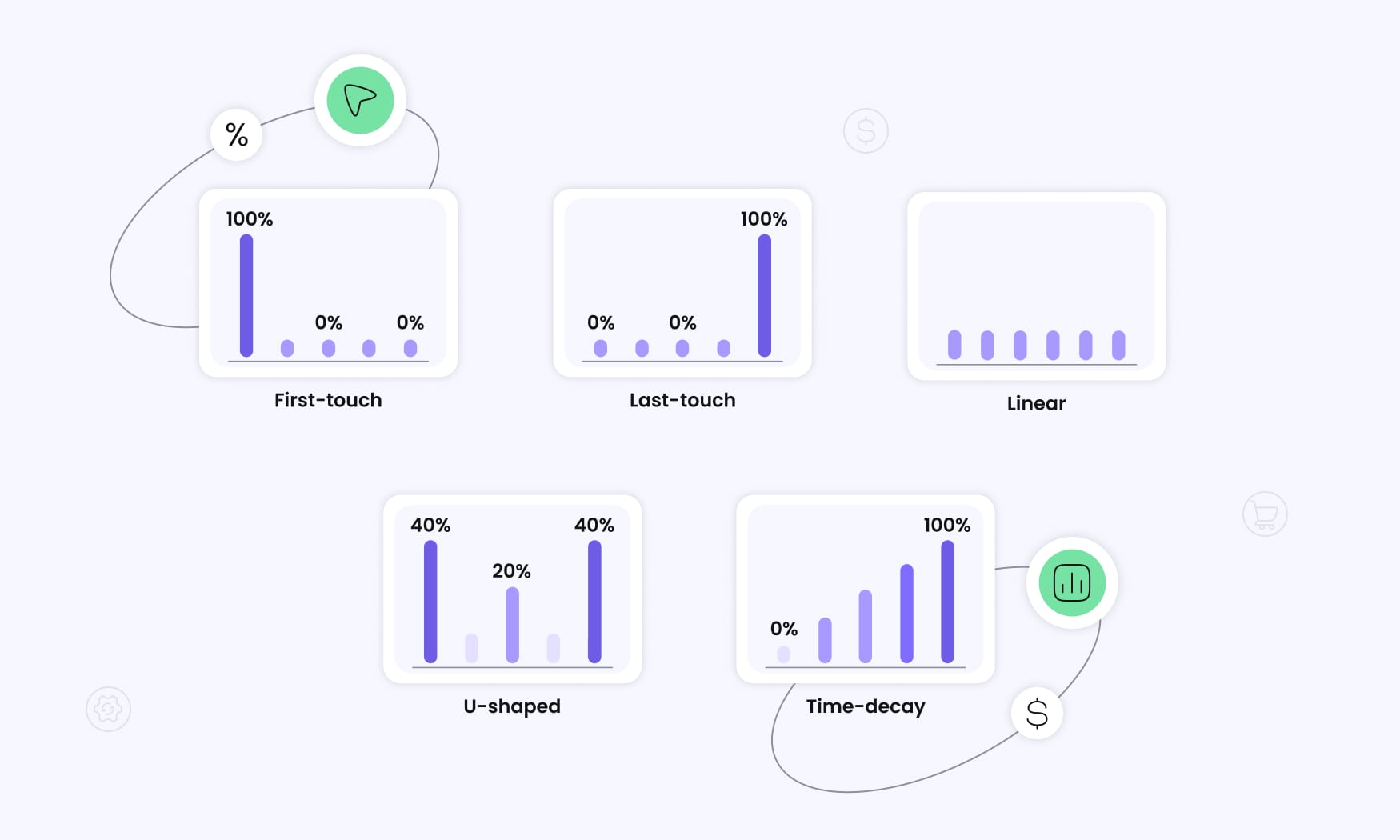
Choosing the right attribution model starts with understanding how each one distributes credit across the customer journey. Every model tells a slightly different story – and time decay stands out for how it balances short-term impact with long-term influence.
Here’s a quick breakdown:
- First-touch attribution: Gives 100% of the credit to the very first interaction – great for understanding awareness, but blind to what happens afterward.
- Last-touch attribution (a.k.a. last-click): Puts all the weight on the final interaction before conversion, ignoring everything that built momentum earlier.
- Linear attribution: Splits credit evenly across every touchpoint – simple, but it assumes each interaction matters equally (which is rarely true).
- Time decay attribution: Distributes credit based on timing – the closer a touchpoint is to the conversion, the more credit it earns.
| Attribution Model | First Touchpoint Credit | Middle Touchpoints Credit | Last Touchpoint Credit | Best Use Case |
| First-Touch | 100% | 0% | 0% | Brand awareness analysis |
| Last-Touch | 0% | 0% | 100% | Direct response campaigns |
| Linear | Equal distribution | Equal distribution | Equal distribution | Comprehensive journey analysis |
| Position-Based (U-shaped) | 40% | 20% (distributed) | 40% | Balanced intro/close focus |
| Time Decay | Minimal | Graduated | Maximum | Recency-focused optimization |
Let’s put that into context with a 30-day customer journey involving five touchpoints:
- Day 1: Clicks a social media ad → 3% credit
- Day 8: Reads a blog post via organic search → 7% credit
- Day 15: Downloads a whitepaper from an email → 20% credit
- Day 22: Attends a webinar → 30% credit
- Day 30: Clicks a retargeting ad and converts → 40% credit
This breakdown shows exactly how time decay attribution works in practice – rewarding the interactions that happen closer to conversion while still acknowledging the earlier ones that helped build awareness and intent along the way.
When to choose time decay over position-based (U-shaped) or custom models
The position-based attribution model (often called the U-shaped model) gives most of the credit to the first and last interactions, then splits the rest evenly among everything in between. It’s a balanced approach, but not always the most accurate when late-stage interactions carry more influence on conversions.
That’s where time decay attribution comes in. It’s the smarter choice when timing clearly matters – when the closer a touchpoint is to conversion, the stronger its impact.
You’ll get better results with time decay than with position-based or linear attribution models when:
- Customer decision-making speeds up as they get closer to purchase.
- Bottom-funnel optimization is your main focus.
- Your sales cycle includes detailed late-stage evaluations or demos.
- Remarketing, retargeting, and nurture campaigns play key roles in driving conversions.
On the other hand, position-based attribution works best when both the first impression and the final push deserve equal credit – such as in brand-driven campaigns where awareness and conversion efforts are equally essential.
Hybrid approaches combining time decay with other attribution methods
Advanced marketing teams rarely rely on a single attribution model. Instead, they blend methods to capture a more complete picture of performance. A hybrid approach might use time decay attribution to optimize conversions, while applying a linear attribution model to measure long-term brand awareness and engagement.
Here are some of the most effective hybrid strategies:
- Model comparison dashboards: Display performance data side by side across multiple attribution models to reveal how credit distribution changes by perspective.
- Channel-specific attribution: Apply different models to different marketing channels – for example, time decay for paid search and linear for organic content.
- Goal-specific attribution: Match the model to the outcome – use time decay for demo signups, but position-based for brand engagement goals.
- Time-segmented attribution: Switch between models depending on campaign duration or lifecycle stage to capture how influence shifts over time.
This kind of flexibility gives marketers both precision and perspective – helping them see not just what converted, but why it did.
Performance benchmarks for different attribution models by industry
The effectiveness of each attribution model depends heavily on customer behavior and sales cycle length – which means benchmarks vary widely across industries. Knowing these differences helps set realistic performance expectations and choose the right model for your goals.
B2B SaaS Benchmarks
- Time decay attribution usually shifts 15–25% of credit from early-stage to late-stage touchpoints compared to the linear attribution model.
- Companies often see 8–15% improvement in conversion optimization when moving from last-touch to time decay attribution.
- Email nurture campaigns typically gain 30–50% more credit under time decay, reflecting their strong influence in the final stages of the buyer journey.
E-commerce Benchmarks
- Retargeting campaigns often earn 40–60% more credit with time decay attribution, as these touchpoints usually happen right before purchase.
- Paid search campaigns tend to gain 20–35% additional credit compared to linear models, emphasizing their role in conversion-focused moments.
- Social media ads, on the other hand, may lose 10–20% of credit, since they primarily drive awareness earlier in the funnel.
These benchmarks highlight how time decay attribution shifts focus toward the interactions that happen closer to the point of conversion – offering a clearer, more actionable view of what truly drives results in each industry.
Best Use Cases for Time Decay Attribution
Time decay attribution shines in marketing environments where conversions don’t happen overnight – where customers move through long, multi-touch journeys before finally making a decision. Knowing when to use this model helps businesses choose an attribution strategy that actually reflects how people buy.
B2B and SaaS companies with long sales cycles
For businesses with sales cycles longer than 30 days – like SaaS platforms, enterprise software providers, and consulting firms – time decay attribution is often the most realistic model. These customer journeys include multiple stakeholders, demo requests, webinars, and product evaluations over weeks or months.
In such cases, time decay helps identify which late-stage interactions – like demo calls or proposal discussions – truly push deals across the finish line, while still acknowledging the contribution of early thought leadership and educational content.
E-commerce businesses with multi-step purchase paths
In e-commerce, particularly in research-heavy categories such as electronics, fashion, and home goods, customers don’t buy after a single click. They compare prices, read reviews, subscribe to newsletters, and wait for offers before converting.
Time decay attribution clarifies which touchpoints – like retargeting ads or discount emails – most effectively turn browsers into buyers, helping retailers fine-tune their remarketing strategies and allocate budgets to the right channels.
Service industries driven by recent interactions
Industries such as insurance, finance, and professional services often involve lengthy research followed by decisive final steps. For example, someone shopping for life insurance might explore options for weeks, but the actual purchase hinges on recent sales interactions or a timely promotional offer.
Here, time decay attribution captures that reality perfectly – weighting those final, high-impact touchpoints more accurately than equal-weight models like the linear attribution model.
Businesses running complex nurture and remarketing campaigns
Companies with mature marketing automation setups – featuring personalized email sequences, multi-channel retargeting, and dynamic content delivery – benefit heavily from time decay attribution. It ensures that those bottom-funnel activities get proper credit for closing deals while maintaining visibility into the full customer journey.
In short, time decay attribution is ideal for organizations that care about accuracy, complexity, and context – not just counting clicks, but understanding what truly drives conversions.
How To Implement Time Decay Attribution Model
Rolling out a time decay attribution model isn’t just about flipping a switch – it takes smart planning, precise tracking, and ongoing fine-tuning.
The payoff, though, is worth it.
With the right setup, marketing teams can move beyond basic single-touch reporting and start measuring performance with far greater accuracy and insight.
Technical setup requirements including UTM parameter strategy and conversion tracking
Start your implementation with a rock-solid UTM parameter strategy – it’s the backbone of accurate attribution. Consistent tracking across all channels ensures every click, ad, and campaign can be properly credited within your time decay model.
Create clear, standardized naming conventions for all UTM parameters so your data stays clean and comparable over time:
- Source: The exact platform or channel (e.g., facebook, google, email)
- Medium: The marketing channel type (e.g., social, paid-search, email)
- Campaign: The campaign or promotion name
- Content: The specific ad creative or link variant
- Term: Keywords or audience targeting details
Next, set up conversion tracking for both macro and micro actions – not just purchases or sign-ups, but also smaller engagement signals like email subscriptions, downloads, or demo requests. These interactions show how prospects move through the funnel before converting.
Finally, make sure your tracking framework includes offline touchpoints where relevant. For B2B organizations, that often means integrating data from trade shows, sales calls, or in-person meetings to get a truly complete view of the customer journey.
Data integration steps for CRM, marketing automation, and analytics platforms
For time decay attribution to work properly, every part of your marketing tech stack needs to speak the same language. That means integrating data from all systems that capture customer interactions – so you can track the entire journey from first touch to conversion.
Start by mapping out every point where customers engage with your brand and identifying which tools record those interactions. Typical integrations include:
- CRM systems – to track sales conversations, pipeline movement, and deal attribution
- Marketing automation platforms – for emails, nurture sequences, and behavioral triggers
- Advertising platforms – for clicks, impressions, and conversions across paid channels
- Website analytics tools – for organic traffic, direct visits, and on-site actions
- Social media management tools – for engagement, mentions, and referral tracking
Use APIs, webhooks, or data warehouse solutions to centralize everything in one place for analysis. Many teams use Customer Data Platforms (CDPs) or dedicated marketing attribution software to handle this integration – simplifying data flow and ensuring every touchpoint is accurately captured for your time decay model.
Recommended decay rate settings based on industry and sales cycle length
Your chosen decay rate has a major influence on how credit is distributed in the time decay attribution model. Set it too short, and you’ll undervalue awareness-building activities; too long, and you’ll blur the impact of recent interactions.
The key is aligning your settings with real customer behavior and sales cycle length.
Industry-specific recommendations:
| Industry | Recommended Half-Life | Rationale |
| E-commerce (fast-moving goods) | 3-7 days | Short consideration periods |
| SaaS (SMB) | 7-14 days | Moderate evaluation cycles |
| Enterprise software | 21-45 days | Extended decision processes |
| Financial services | 14-30 days | Significant research phases |
| Automotive | 30-60 days | High-consideration purchases |
Use these ranges as a starting point, not a rulebook!
Once your model is live, monitor conversion path length, time-to-conversion, and touchpoint frequency to fine-tune your decay rate. The goal is to reflect how your customers actually make decisions – not just how a chart says they should.
Quality assurance checklist for accurate attribution tracking
To keep results accurate, you need consistent monitoring and a structured quality assurance process that catches errors before they distort your insights.
Here’s a practical QA checklist to follow:
- Cross-device tracking accuracy: Confirm that user journeys remain connected even when customers switch between devices or browsers.
- UTM parameter consistency: Audit all tracking links to ensure parameters are correctly formatted, active, and standardized across campaigns.
- Conversion event accuracy: Test conversion triggers regularly to confirm they’re firing correctly and attributing to the right sources.
- Data freshness: Watch for delays in data syncs or processing that could skew time-based attribution results.
- Integration health: Verify that all connected platforms – CRM, analytics, and ad networks – continue feeding clean, complete data into your attribution system.
Running routine audits like these ensures your attribution reports reflect reality, not tracking errors – so every optimization decision is backed by reliable, trustworthy data.
Measuring Success with Time Decay Attribution
Implementing time decay attribution is just step one – the real value comes from how you measure and act on it.
To get meaningful results, you’ll need the right success metrics, clear reporting frameworks, and a plan for turning attribution data into continuous optimization. This is where raw tracking transforms into insight – and insight into smarter marketing decisions.
Key Metrics to Track
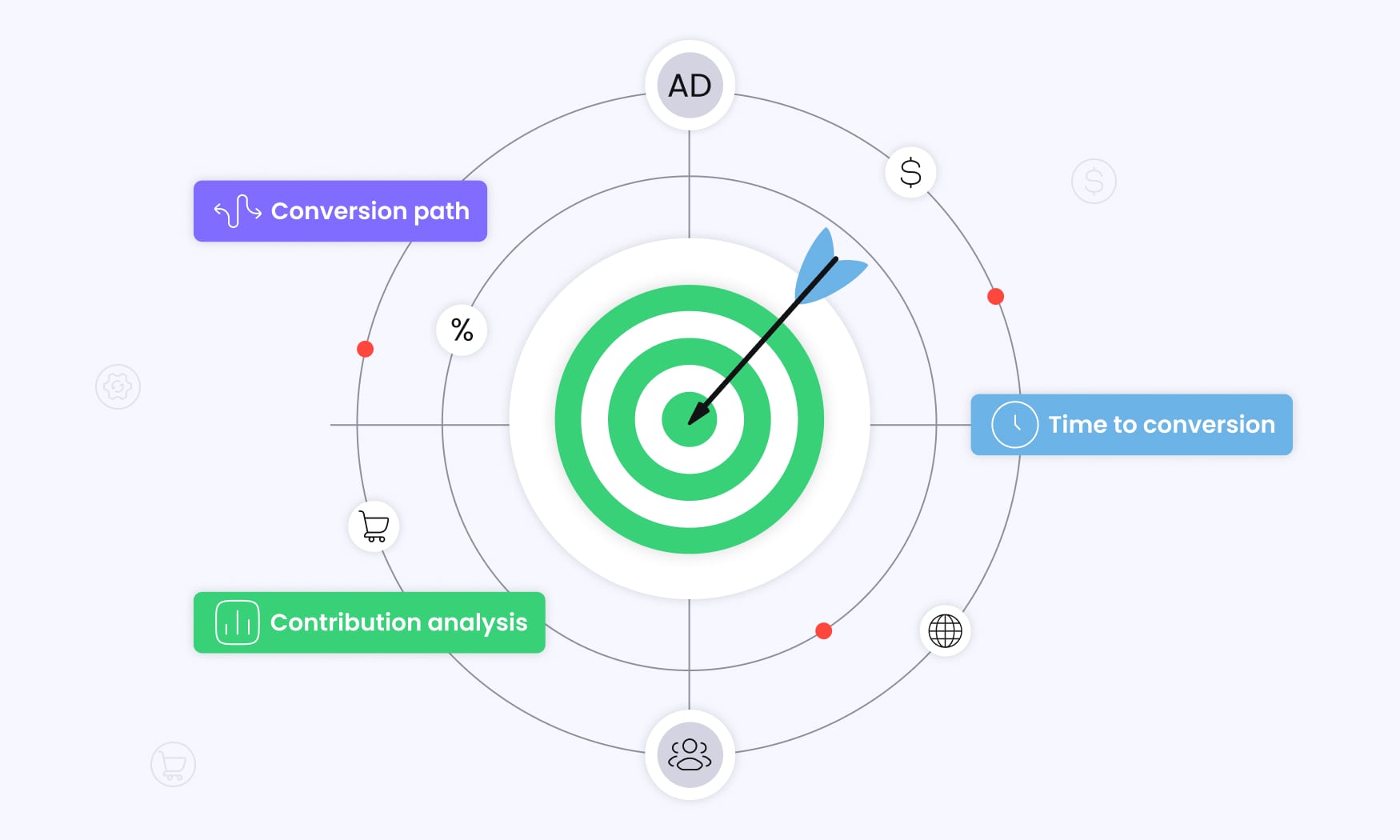
To truly measure success with a time decay marketing attribution model, focus on metrics that uncover how customers move through the funnel and which marketing strategies drive the most impact.
These KPIs connect attribution insights to real business performance – helping you refine both tactics and budget allocation.
- Conversion Path Length: Tracks how many touchpoints occur before conversion, offering context for how attribution credit is distributed. Longer journeys often call for a slower decay rate, while shorter ones benefit from a more aggressive curve.
- Time to Conversion: Measures how long it takes customers to move from first interaction to purchase. This metric helps fine-tune your decay settings and identify ways to shorten the buying cycle through smarter marketing strategies.
- Channel Contribution Analysis: Compares how credit shifts across channels under time decay versus other models. Channels gaining more credit likely deserve additional investment, while those losing credit may need creative or strategic adjustments.
Other valuable supporting metrics include:
- Revenue per touchpoint by channel and campaign
- Cost per conversion under different attribution models
- Customer lifetime value (CLV) attributed across acquisition channels
- Cross-channel sequence analysis to map how interactions influence one another
Together, these metrics provide a complete view of how your marketing attribution model translates activity into growth – and where to double down for maximum ROI.
A/B testing methodology for comparing attribution model performance
The best way to prove the value of a time decay marketing attribution model is to test it head-to-head against other approaches. A structured A/B testing framework helps determine whether time decay delivers more accurate insights and stronger business outcomes than models like linear or last-touch.
Here’s how to set it up:
- Baseline Period: Start by recording key performance metrics (conversion rate, CPA, ROI) under your current attribution model.
- Split Testing: Divide your campaigns or budget allocation based on insights from different attribution models – one group guided by time decay, the other by your baseline model.
- Performance Monitoring: Track the impact on conversions, revenue, and channel efficiency over a fixed period.
- Statistical Analysis: Compare the results to identify which attribution-informed marketing strategies drive the best outcomes.
Run these experiments across multiple time frames, audience segments, and channels. This approach not only validates whether time decay attribution improves performance but also highlights where it adds the most value – giving you data-driven confidence in your model selection and optimization decisions.
Conclusion: Does Time Decay Attribution Belong in Every Modern Marketer’s Toolkit?
For performance buyers chasing real ROI, time decay attribution isn’t the holy grail, but a strategic tool.
It shines in complex journeys where multiple touchpoints drive conversion, but advanced buyers know: no single model fits all.
If you’re running fast-moving, direct-response campaigns, where users click and convert within hours, time decay can overemphasize recency and miss the bigger picture.
In those cases, lean toward position-based or data-driven models that better reflect instant buying behavior and channel influence. But if your funnel involves nurturing (retargeting, email sequences, multi-step engagement) time decay attribution becomes your best ally.
It captures momentum in the customer’s decision-making process and shows exactly which interactions close the deal.
The pros know it’s not about picking one model – it’s about building a multi-model mindset. Compare results, cross-check against real revenue, and adjust based on your cycle length and channel mix. That’s how advanced marketers evolve from tracking clicks to understanding influence.
And this is where RedTrack earns its keep.
RedTrack gives you the flexibility to test attribution models, validate assumptions, and see performance data through multiple lenses – all while keeping your tracking airtight.
So, if you’re on the fence, here’s your move: start with time decay, compare it with data-driven or position-based, and let the data – not habit – guide you. Use RedTrack to keep it clean, measurable, and profitable.
Because smart buyers don’t guess attribution. They own it.


